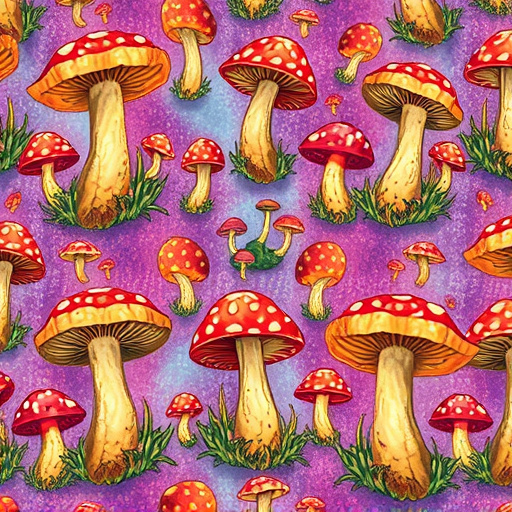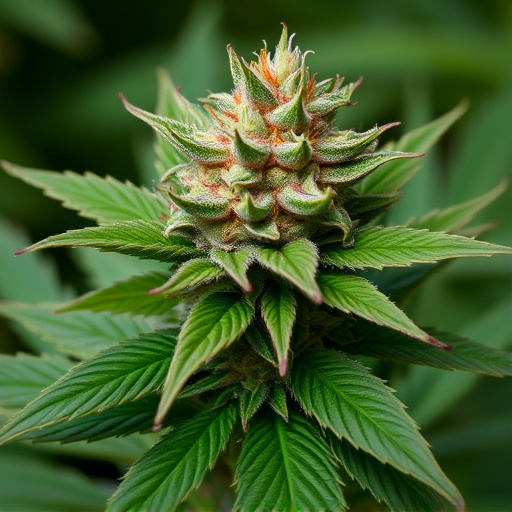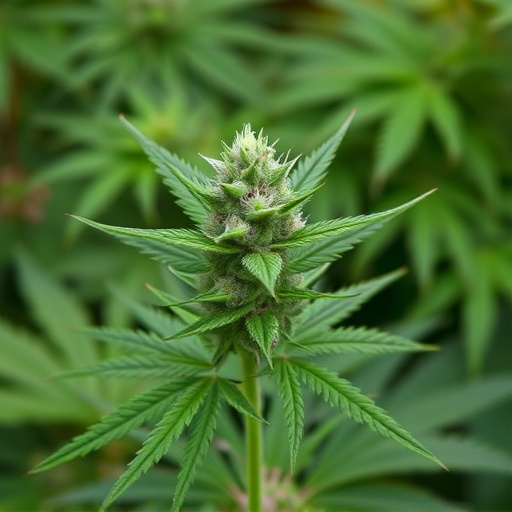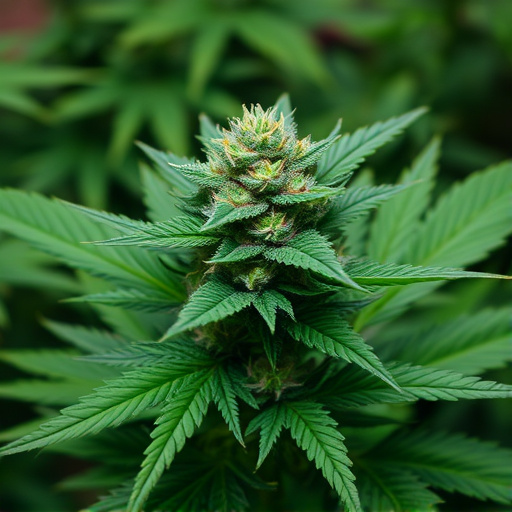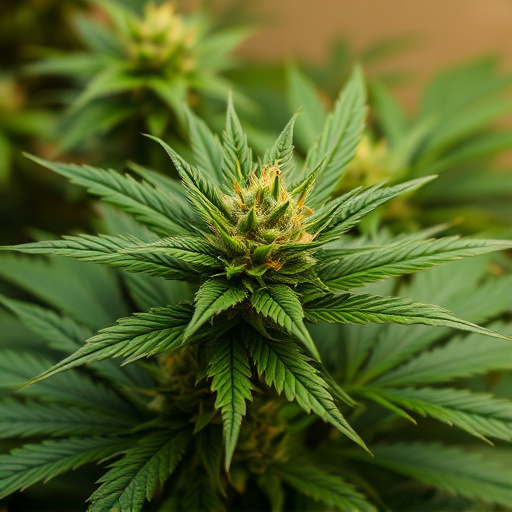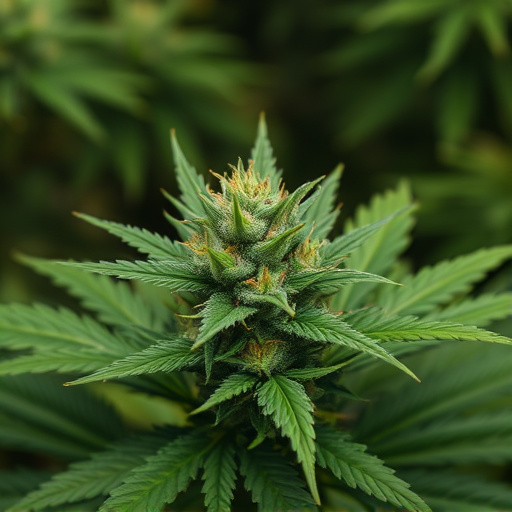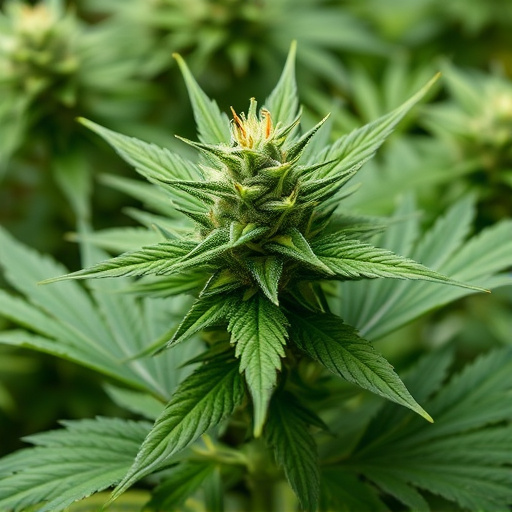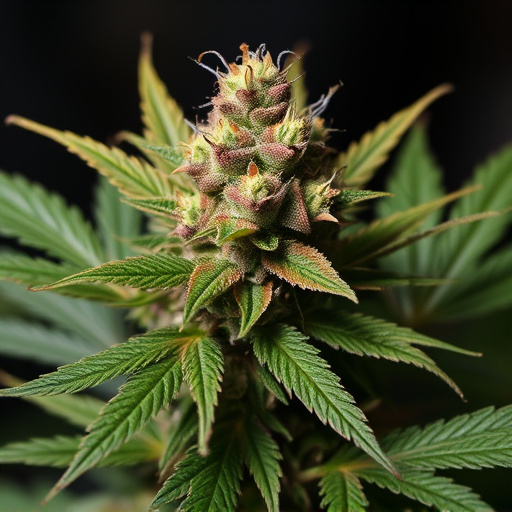High THC sativa strains significantly impact hunger due to their interaction with the body's endocannabinoid system (ECS). THC binds to brain and immune receptors, modulating appetite and releasing dopamine for enhanced pleasure. Individual responses vary based on strain potency, consumption method, and tolerance, leading to increased or no change in hunger. Other cannabis compounds modify THC effects, complicating appetite regulation.
The “munchies” phenomenon, long associated with cannabis consumption, has intrigued scientists and users alike. This article delves into the complex science behind the munchies, focusing on the role of THC in appetite stimulation. We explore how high THC sativa strains impact hunger and cravings, delving into the interplay between cannabis and the body’s natural appetite regulators. By understanding these mechanisms, we can better appreciate the effects of these potent strains.
- Understanding the Role of THC in Appetite Stimulation
- How High THC Sativa Strains Impact Hunger and Cravings
- Exploring the Complex Relationship Between Cannabis Consumption and the Body's Natural Appetite Regulators
Understanding the Role of THC in Appetite Stimulation
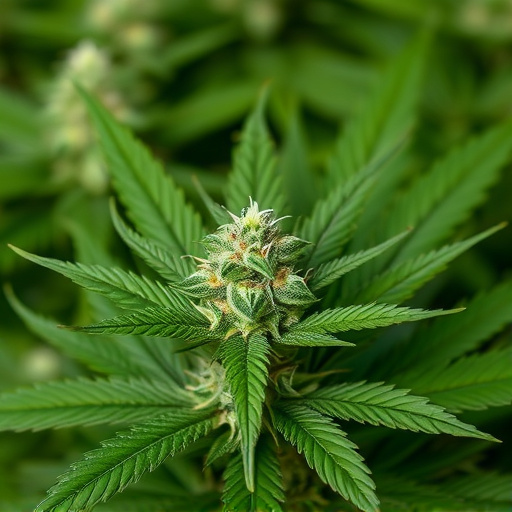
THC, or tetrahydrocannabinol, plays a significant role in appetite stimulation, a phenomenon commonly known as the “munchies.” When consumed, THC interacts with our body’s endocannabinoid system (ECS), which regulates various physiological processes, including hunger. Studies have shown that THC can increase appetite by binding to receptors in the brain and spinal cord, leading to increased hunger cues. This effect is particularly pronounced with high THC sativa strains, known for their potent cannabinoid content. These varieties often contain higher levels of THC compared to indica strains, making them more likely to induce a strong appetite response.
The munchies are not just a common side effect for cannabis users; it’s a complex interaction between the body and mind. Beyond appetite stimulation, THC also influences mood and memory, contributing to the overall experience associated with consuming high THC sativa strains. Understanding this mechanism sheds light on why many people turn to cannabis to satisfy their hunger, especially in situations where traditional food intake may be challenging or unappealing.
How High THC Sativa Strains Impact Hunger and Cravings
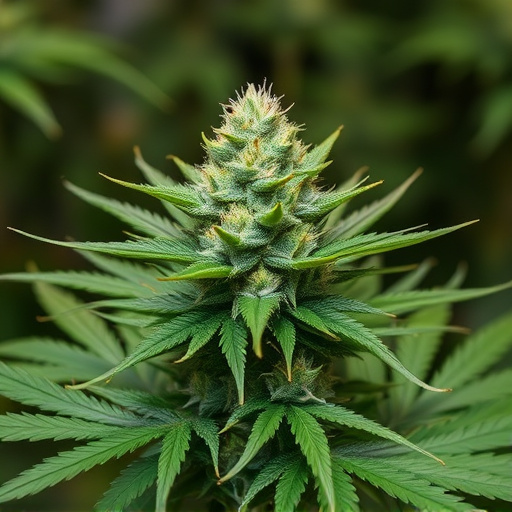
High THC Sativa strains have a notable impact on hunger and cravings due to their unique interaction with the body’s endocannabinoid system (ECS). THC, the primary psychoactive compound in cannabis, binds to specific receptors in the ECS, particularly CB1 receptors found in the brain and CB2 receptors in the immune system. When activated, these receptors modulate various physiological processes, including appetite and metabolism. Studies suggest that high THC content in Sativa strains can stimulate the release of neurotransmitters like dopamine, known to enhance pleasure and reward feelings, thereby intensifying cravings for food.
Furthermore, Sativa strains with elevated THC levels often induce a euphoric state, which can lead individuals to seek out and consume more food as part of a rewarding experience. This effect is particularly pronounced in individuals who are already prone to overeating or have a history of eating disorders. Understanding the influence of high THC Sativa strains on hunger and cravings is essential for both medical cannabis users seeking to manage appetite-related conditions and recreational users looking to maintain a healthy relationship with food.
Exploring the Complex Relationship Between Cannabis Consumption and the Body's Natural Appetite Regulators
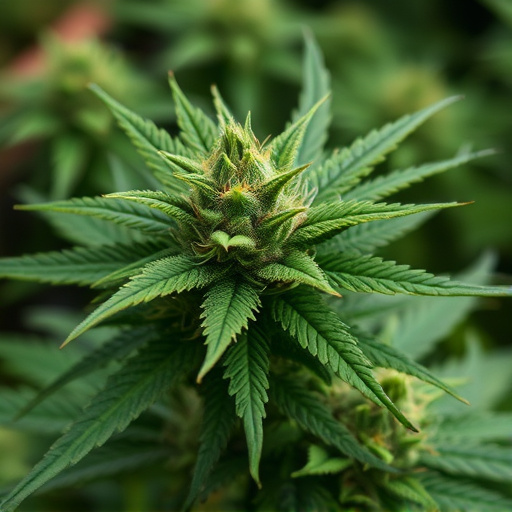
The relationship between cannabis consumption and appetite is complex, particularly with the rise in popularity of high THC sativa strains. These varieties, known for their potent psychotropic effects, also stimulate certain neurotransmitters and receptors that influence hunger and satiety. When consumed, cannabinoids like THC interact with the endocannabinoid system (ECS), a series of chemical messengers in the body that help regulate appetite, memory, mood, and pain. Studies have shown that THC can bind to specific receptors in the brain, leading to increased hunger and cravings—a phenomenon often referred to as “munchies.”
However, the effect isn’t universal. Individual responses vary greatly, depending on factors like strain potency, consumption method, and personal tolerance. High THC strains may induce a strong appetite in some users, while others might experience no change or even a suppressed desire for food. Additionally, the presence of other compounds in cannabis, such as terpenes and flavonoids, can modify the effects of THC, further complicating the interaction between cannabis and the body’s natural appetite regulators.
In conclusion, the science behind the “munchies” phenomenon is a complex interplay between THC, natural appetite regulators, and specific cannabis strains. Research reveals that high THC sativa strains can significantly impact hunger and cravings, with THC stimulating appetite-related neurons in the brain. Understanding this relationship offers insights into both potential therapeutic applications for those with eating disorders as well as the importance of responsible consumption to avoid excessive eating. Specifically, exploring the effects of high THC sativa strains provides valuable knowledge about how cannabis interacts with our bodies’ natural hunger cues.
